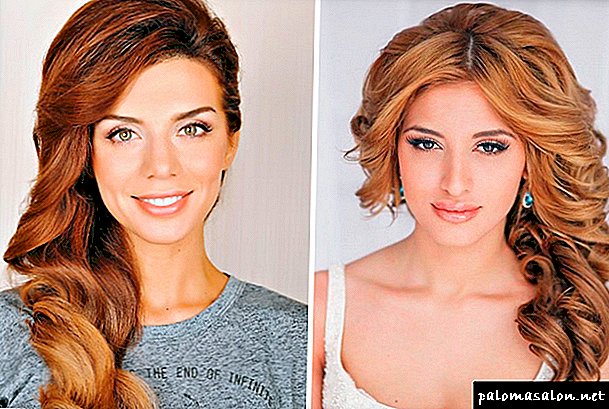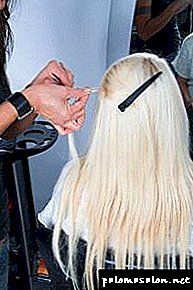Baldness tends to concern adults and older people, but sometimes occurs in children. Baldness in children can occur in infancy or at an older age, but before puberty.
A huge amount of hair on the pillow after sleep, gaps on the crown of the head, massive hair loss when combing - these are just some of the possible signs of baldness in children.
The most common form of hair loss in children is focal baldness.
Causes of hair loss in children
The main causes of hair loss include congenital or hereditary diseases. TO hair loss in children can also lead to anomalies of hair stalks, ringworms, leading to thinning hair.
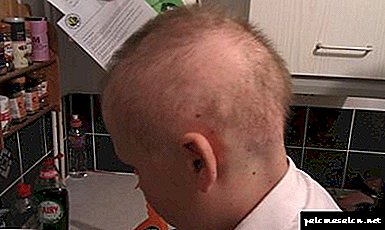
Without parental support, baldness in children can interfere with socialization.
The most frequent varieties of this disease in children are focal baldness and trichotillomania, which is expressed by intentional or irresponsible hair pulling out.
Alopecia in the course of these diseases is manifested by round bald patches on the scalp. Trichotillomania can be a manifestation of emotional disorders, as well as thumb sucking or nail nibbling.
Another cause of hair loss in children is hypotrichosis simplex - the disease is inherited in an autosomal dominant manner. Diagnosed in childhood. May occur in both sexes. Children withhypotrichosis simplex from birth have rather sparse hair, sometimes normal.
In the period of early childhood, the hair becomes very thick and coarse, and at the time of puberty they begin to fall excessively, starting from the top of the head. Complete baldness occurs, usually at the age of about 20 years.
The reason hypotrichosis simplex is the irregular shape of the receptors on the surface of the hair follicles, resulting in blocking hair growth.
Focal baldness in children
When focal baldness concerns children, it seems strange to us, because we are accustomed to the fact that mature people tend to go bald. For a child, it is important in this situation to keep cool and get support at a difficult time. Adopting a new, different type is a way to overcome a problem that is baby baldness.
Focal baldness is not an infectious disease. It interferes with normal life, school attendance and play with other children. We must understand that hair loss for a child is not only an aesthetic problem. The child should know that he is loved, and the absence of hair does not condemn him to the exclusion of his friends.
Causes of focal baldness in children
Focal baldness in children has various causes and therefore requires non-standard approaches to treatment. The development of focal baldness can be caused by the genetic and prevalence of this disease in the family. Some children may react to hair loss under severe stress, for example, at school or in kindergarten.
Often, baldness is associated with disorders of the immune system, which for unknown reasons begins to attack the body's own cells. Then the hair follicles become very small.
Sometimes responsible for focal baldness they have associated diseases, such as food allergies, thyroid hypofunction, or parasitic diseases. Treatment of the underlying disease usually leads to hair regrowth.
The process of focal baldness in children
The process of focal baldness is completely unpredictable. The disease can only spread to the head or other hairy parts of the body.
On the head there are separate, bald spots, sometimes it comes to complete loss of hair. Often hair growth is restored spontaneously, spontaneously, without the introduction of treatment.
Treatment of focal baldness in children
Methods of treatment of focal baldness are to stimulate the hair follicles. Apply pharmacotherapy and natural methods: massage the scalp, acupuncture, stimulation by solar radiation, heat treatment, homeopathy, herbs, fish oil, bath with mustard or with a solution of aspirin, primrose oil, borage, linseed and black currant.
To maintain hair growth are good preparations of aloe vera in the cream for lubricating the head or as solutions for drinking. Zinc tablets should also be taken (pumpkin seeds are a natural source of zinc).
It is very important that in the process treatment of focal baldness in children, form the appropriate conditions for them. A feeling of acceptance will help alleviate the shock of hair loss.
Here are some tips on what parents can do during treatment:
- The main thing is not to allow the child to isolate himself from the world. You should try to contact him with friends and acquaintances.
- Try to ensure that the child does not give up their previous interests, because of baldness. His hobby is very important, it helps him to forget about changes in appearance.
- Let the child decide whether to mask his illness. If he wants to somehow disguise alopecia, especially when leaving the house - give him freedom.
- To hide baldness, hats, head scarves, or even wigs are well established. In the summer, however, they become rather uncomfortable, especially for a child.
- Remember to talk to the teachers about the problem before the child goes to the lessons in a headdress. In some schools, this may cause the teacher to comment, if he does not know that the reason is baldness in a child.
- Information is better than no information. Try with your child to learn as much as possible about what baldness is.
- Let your child regret hair loss. This is a natural reaction and should not be suppressed. However, having experienced this sadness, you need to go further. From this point on you should try to think about the good. A sense of self-worth and distancing yourself from your own appearance will help your child cope in such a difficult time for him.
Remember! Child's baldness is not the end of the world! If you keep this in mind, it will be easier for the child to understand this.
Telogen baldness in children
Diffuse hair loss caused by disorders of the hair follicle cycle. This is the most common non-inflammatory cause. non-scar baldness in children.
Causes of telogen hair loss can be: infectious diseases with fever, drugs and chemicals (beta-blockers, anticonvulsants, anticoagulants, retinoids, vitamin A), hormonal disorders, nutritional deficiencies, skin and connective tissue diseases, erythroderma, absorption syndrome , Aids, stress load.
Telogen baldness includes anaphena weakened hair syndrome, enteropathic acrodermatitis and Menkes syndrome. Enteropathic acrodermatitis is a genetically determined disease. The body of the patient can not absorb zinc from the gastrointestinal tract. Symptoms of the disease are noticeable after the baby is born or after the completion of breastfeeding. An erythema appears on the skin with a distinct outline.
Menkes syndrome is also a hereditary disease that occurs very rarely, associated with chromosome X. It is characterized by skin changes, among them hypopigmentation, manifested by numerous flaws in the hair structure, for example, cross-section or twisting of hair.
As a result of this phenomenon, hair, eyelashes and eyebrows become fluffy and fall out. The prognosis is poor, children die, usually at the age of 2-5 years.
Physiological causes
In children, as well as in adults, the hairline is renewed. Hair passes two stages - growth and rest. The growth stage lasts about 3 years, and the rest (growth stop) lasts from 1 to 6 months. Old rods remain in the follicles until new ones appear, then fall out. Normally, up to 15% of hair is at rest. Their loss is not evident: a few hairs that fell out during combing or shampooing are considered regularities.
Changes in hormonal levels or stress are factors that can interrupt the growth of a large amount of hair at the same time. After a time, the growth phase of new rods begins and a massive, noticeable rejection of old ones. How does this manifest in children?
Hair loss in babies under 1 year
Babies are born with a thin soft down on the head. During the first 6 months, the downy hairs fall out. This is due to a sharp decrease in the level of hormones in the body. For the same reason, there is a significant loss of hair after giving birth at the moms themselves.
 The bald spot on the head of the baby
The bald spot on the head of the baby
Hair in newborns not only fall out, but also roll out, forming a high hairline on the back of the head and on the sides of the head. Inexperienced parents can associate such phenomena with the development of rickets. However, this disease cannot be judged by only one feature: there must be others, for example, the bones of the baby’s skull become soft and thin.
There is another explanation for why bald spots appear. A small child spends most of the time lying down and turning his head. Constantly coming into contact with the pillow, the baby's hair is worn out, or, as people say, roll out.
By 6 months, they begin to grow again, and the bald patches disappear. Changing the thickness and diameter of the rods: the fluff is replaced by intermediate hair. They differ from adults in density and pigmentation. Children's hair is thin, soft and less colored.
Hair loss in children 4-5 years
The next physiological period in which hair loss is considered normal is at an age of 4-5 years. At this time, hormonal changes take place in the body, and this is reflected in the condition of the hair.
The structure of children's hair can change: curly locks are aligned or vice versa, straight lines start to curl, and the color becomes darker. Starts the process of converting children's hair into adults (terminal). Final replacement will occur in adolescence. Terminal hair rods are much denser and harder intermediate.
In some cases, hair loss in children 4-5 years passes unnoticed, in others - more intensely, so that when combing on the ridge there are whole shreds. If the situation worries the parents, they can register the child for an appointment with the children's trichologist. It is also worth consulting with a doctor if the hair falls out at an earlier age - 2-3 years.
Hair loss at the age of 6-8 years
At 7 years old (for some children at 6 years old) a new epic begins: entering school. This time is associated with an increase in physical and psychological stress. Adaptation to the new daily routine with lessons of 45 minutes and homework, unfamiliar team, disciplinary responsibility - these are the causes of stress.
In the presence of nervous tension, the body produces stress hormones. Under the action of these substances, the muscles attached to the hair follicles contract. When squeezed, the food is broken and the roots are damaged, causing the hair to die and start to fall out.
The adaptation period can be long. The task of moms and dads is to support a little schoolboy. The child needs parental attention, good advice, proper rest and balanced nutrition.
Pathological hair loss
Sometimes children lose their hair because of diseases. Such situations can not be called harmless, because if you do not intervene in time, the child faces not only thinning of the strands, but partial and even complete baldness of the head. Older children such a situation can cause serious psychological trauma. The following pathologies can cause significant hair loss:
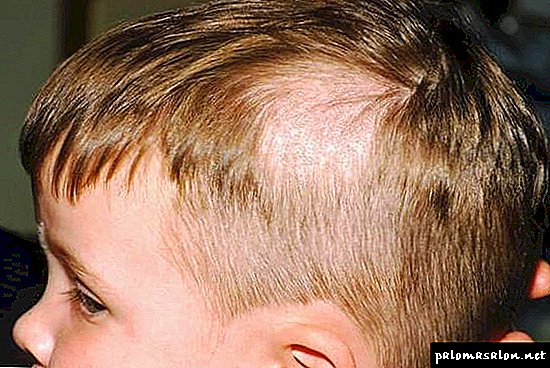 Ringworm in a child
Ringworm in a childRingworm (microsporia) - contagious skin disease caused by certain types of fungi. By damaging the skin, microsporia forms round or oval spots covered with crusts or scales. Large foci form on the head with hair broken off at a height of 2-4 mm. Treatment of ringworm of the hairy part is prolonged, with the use of drugs for local and internal use.
Intensive hair loss can be one of the signs of rickets, occur on the background of diseases of the gastrointestinal tract, liver or kidneys, indicate endocrine disorders. Complications can occur due to a deficiency of vitamins and trace elements, in particular biotin (vitamin B7) and zinc.
What does Dr. Komarovsky say
In his program, the famous doctor Komarovsky mentions several more causes of hair loss in children. As for the babies, he notes that chronic overheating of the scalp contributes to problems, namely, the love of mothers and grandmothers for hats. Many adults reason like this: “Children's hairs are not able to keep warm, therefore the baby needs to wear a hat. Otherwise, his head will freeze. ”
Komarovsky debunks this myth, explaining that in adults a quarter of all the blood ejected from the heart goes to the circulation of the brain. In children, this process is even more active, so it is difficult to freeze the baby’s head. Komarovsky recommends removing the cap and allow the scalp to breathe.
Another factor that leads to hair loss is injury to the bulbs. Yevgeny O. emphasizes the well-known fact: frequent combing, tight pigtails, tails, daily shampooing with soap or shampoos - these actions disrupt blood circulation, damage the hair follicles and contribute to the development of traction alopecia.
Treatment and Prevention
 What to do if a child is climbing hair? Since the pathological loss of strands can be a sign of a serious disorder in the body, it is necessary to consult physicians. You can begin a visit to the doctor with a pediatrician, if necessary, he will send the baby for examination to other specialists.
What to do if a child is climbing hair? Since the pathological loss of strands can be a sign of a serious disorder in the body, it is necessary to consult physicians. You can begin a visit to the doctor with a pediatrician, if necessary, he will send the baby for examination to other specialists.
The causes of baldness are in the field of studying endocrinology, gastroenterology, neurology, dermatology, psychosomatics. Diagnostics may include trichoscopy (visual examination of the hair with a special device), computer diagnostics. Based on the results of the examination, treatment with local and systemic medicines is prescribed, as well as hardware manipulations.
For their part, parents need to take practical measures. In their power:
- balance baby's nutrition
- make up the day regimen
- minimize the consequences of stressful situations and, if possible, protect from new ones,
- provide proper hair care, pick up soft shampoos, combs with natural bristles),
- abandon tight hairstyles.
A gentle head massage will help relieve tension and nervousness, as well as improve blood supply to the hair follicles.
Folk recipes
Children can use masks and decoctions to strengthen and enhance hair growth. The main thing is to use natural ingredients in the compositions, avoiding synthetic additives. Here are some recipes:
- Warm up a little 2 tbsp. l fish oil, mix it with 1 egg yolk of chicken eggs, apply a mask on the hair, spreading over the entire length, and warm with a towel. After 30 minutes, the composition should be washed off with shampoo. This mask is made no more than 2 times a week.
- Choose a fleshy aloe leaf, grind it with a blender and rub the gruel into the hair roots. An hour later, the mask should be washed off with warm water.
- Moisten the strands with warm kefir and cover the head with cellophane and a terry towel. After 30-60 minutes, wash your hair. You can soak in the yogurt pulp black bread. This mask is excellent for vitaminizes, nourishes and strengthens the bulbs.
After washing it is recommended to rinse the hair with vegetable decoction. Chamomile, sage, burdock root, calendula, nettle, willow bark are suitable for this purpose. Selecting natural ingredients, you need to be sure that they do not harm the health of the baby. It is better to use home products, as there are preservatives in the store. Do not use components for which the child may develop allergies. Attentive parents will take into account these points.
Loss as a variant of the norm
Not always intense hair loss indicates the presence of pathology. There are three periods in the life of a child when he is most affected by this phenomenon:
- For the first time, parents are faced with massive hair loss when the baby reaches the age of several months. This is such a strong and active process that balding often appears. Do not be afraid. During this period there is a replacement of the vellus hair, with which the child was born, with ordinary children. After a while the hairstyle will come back to normal.
- At the age of 4-5 years, the “children's” hairs change to “adults”, so the loss increases. For some kids, this process goes almost unnoticed, for others, on the contrary, it is very intense.
- When a child starts attending school, his daily routine changes a lot, duties and responsibilities appear, he is surrounded by a new team. Some children endure it almost painlessly, others have different reactions to stress. One of the options - strong hair loss on the head. The body requires a lot of strength, and it saves almost everything.
If the hair is climbing too hard, and the baby has balding spots, you should still seek medical advice for further advice so that he can advise what to do.
Or is it pathology?
Not always the causes of hair loss in children are harmless. Sometimes the process cannot stop on its own. There are many other reasons due to which the hairstyle deteriorates. In this case, you need to know, because of what hair is climbing heavily. Then you should take measures to eliminate the cause. What can cause hair loss in children?
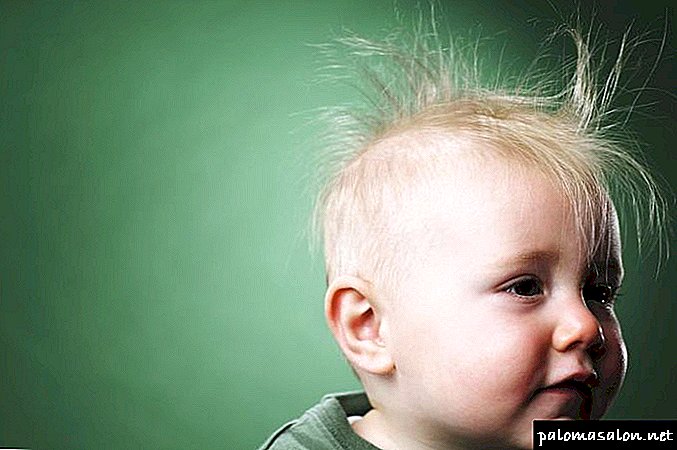
- Wrong care. Too frequent washing of the head can disrupt the natural protective layer, because of this the skin will begin to peel off and itch.
- Unsuitable hair care products can cause allergies.
- Too tight hair bands and complicated hairstyles can damage follicles, so it is not recommended to make them. Because of this, the nutrition of the hair is disturbed, and soon they fall out.
- Lack of vitamins and trace elements.
- Severe stresses and neurotic diseases lead to vasoconstriction, because of this, the nourishment of the hair is disturbed, and they fall out.
- Some children have a habit of curling curls on their fingers or pulling their hair, often in the hands of the whole strand.
In addition, hair loss can be a symptom of a number of diseases:
- hypothyroidism
- ringworm,
- rickets,
- dermatitis,
- diabetes,
- hormonal changes,
- allergic reactions
- total or focal alopecia,
- bacteriological (fungal) infections,
- telogen miasma.
Also, a child can lose hair heavily after surgery and illness. For example, children with cancer and those who have undergone chemotherapy are completely balding.
How to proceed?
If a child has severe hair loss within a few days, it is necessary to consult a doctor. First, the baby will be examined by a therapist. If this is not an age-related phenomenon, he will prescribe a series of examinations to determine the cause of the disease.
The baby must be shown to the trichologist. This doctor specializes in health issues curls. After all examinations and analyzes, doctors will be able to establish the reason why the child's hair falls out. Then treatment will be prescribed that is suitable for the specific disease. If the problem is caused by nervous disorders, then the child will need the advice of a psychologist. Nothing wrong with that. And, most importantly, parents should not engage in self-treatment of the child. This can worsen the condition of his hair.
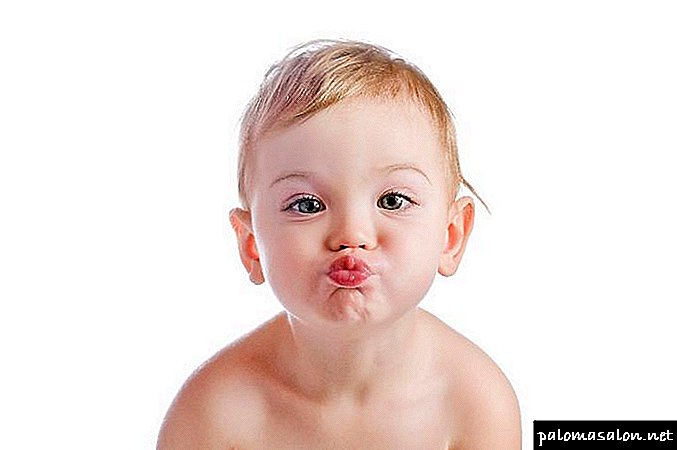
Those who can not sit back and watch the baby bald, you can give some advice. These simple measures will help to maintain healthy hair and will not cause harm. They can also be used to prevent problems. So, what to do when loops fall out?
- Enhanced fortified food. And here we are talking not about taking synthetic vitamins and tablets, but a more varied diet, which includes fresh vegetables, fruits and berries. Kashi are also very useful, so they must be present in the chad menu.
- Proper care. For shampooing, you should use only natural products that do not cause allergies and irritation. Bath procedures should be done no more than 2 times a week in winter and 3 in summer. Otherwise, it is possible to damage the natural protective layer.
- Shaving a bald head will not make the hair thicker, but it can damage the hair follicles. As a result, the situation will only get worse.
- Do not make complex and tight hairstyles, do not over-tighten strands.
- Do not use drugs without first consulting a doctor.
- A light head massage will benefit the child. Only during the procedure, it is impossible to press hard on the skin in order not to accidentally pull out the hairs and not damage the follicles. Massage should be soft circular movements from the edges to the center. This will improve blood flow and nutrition of the hair roots.
- You can use folk remedies for washing the head. For example, rinsing with chamomile or nettle decoction is effective. It is important - they can not be done if the child is prone to allergies.
- The same applies to nutritional masks. Moreover, oil products cannot be kept on the head for longer than 5-10 minutes. Rinse them thoroughly and carefully.
- If the reason is stressful, then it is necessary to help the child calm down, cope with a nervous shock, talk to him, listen, create conditions for a good sound sleep.
Severe hair loss in children can be a serious cause for concern, so you should consult a specialist and not self-medicate or hope that the problem will disappear by itself.
Why do babies lose their hair?
The first hairs of the crumbs appear before his birth. Tribal locks roll out over time, so you should not be afraid of bald patches on the back of the head. Change of hair depends on the growth of the child's body and lasts from infancy to 9-11 years old child.
Intensive hair loss in children is not a typical phenomenon, but is currently very common. Each case is individual, to understand when an immediate visit to the trichologist is necessary, and when there is a natural renewal of hair, knowledge of the causes of hair loss will help.
Causes of natural hair loss at different ages
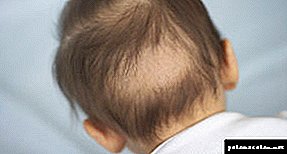 The first hair loss occurs 2 or 3 months after birth, the fluff on the baby’s head is loosely attached to the follicular nests and begins to fall. In this case, there is no cause for concern, soon the baby will grow strong and healthy hair.
The first hair loss occurs 2 or 3 months after birth, the fluff on the baby’s head is loosely attached to the follicular nests and begins to fall. In this case, there is no cause for concern, soon the baby will grow strong and healthy hair.
It is believed that if weak hairs are shaved off or cut off, thick hair will grow. However, this is a complete delusion, it all depends on the natural change of hair, this process can not be accelerated.
You should not worry about your parents even with short-term hair loss of 3-year-old crumbs. Loss due to hormonal changes in the children's body.
In addition to replacing the baby’s primary teeth with indigenous ones, there is also a change in its hairs. When a child turns 4-5 years old, his top and back of his head may noticeably thin out due to the natural change of hairs. The life span of the hair located on the front of the head is exactly equal to this period of time. The strands that are on the top and the back of my head change a bit later - in 6-10 years.
Stressful state of the child
Loss of hairs at 6-8 years of age is often associated with psychological causes, in particular - overstrain of the nervous system. It is noticed that the more emotional the child, the more likely that he will face the problem of hair loss.
At about 7 years of age, children go to school for the first time, not only the familiar environment, but also the daily routine. Mental stress affects the blood circulation, as a result of which the follicles are clamped, receiving a smaller amount of nutrients, because of this, the hairs become brittle and fall out. As a rule, after a period of adaptation, the problem disappears.
In addition, adolescents are under stress when their families have an unhealthy psycho-emotional atmosphere, parents divorce, scandal, or put pressure on children, making excessive demands. Perhaps the child is too tired and not getting enough sleep. All these factors contribute to the development of alopecia.
Various diseases
Parents should be especially careful when losing hair of a 10-year-old child. This age is not associated with hormonal alteration of the body, and the cause of loss can be unbalanced nutrition, worm infestation, medication, lack of vitamins, microelements or hypothyroidism.
In addition, regardless of age, it is impossible to postpone the visit to the doctor if alopecia affected the extensive hairy areas of the head and the area around the entire face contour. Hair loss can be caused by various diseases:
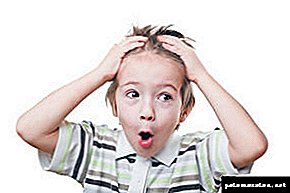 gastrointestinal tract,
gastrointestinal tract,- dermatosis
- infections,
- genetic predisposition
- fungal infection of the skin,
- surgery with anesthesia,
- an excessive amount of provitamin A,
- rickets due to unbalanced diet,
- hormonal disorders
- diabetes mellitus
- oncology,
- allergic reactions to medicines, products, household chemicals.
What diagnostic methods are used?
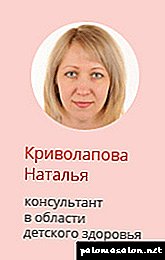
As soon as the parents have discovered an intense loss of hairs in the child, it is not necessary to hesitate to consult a doctor. Early treatment has a more favorable prognosis.
To find out the reasons why the child's hair falls out on the head, it is necessary to undergo an extensive examination. The diagnosis of child baldness is handled by the following specialists: dermatologist, neurologist, trichologist, endocrinologist, and gastroenterologist.
 Mandatory diagnostic methods include trichogram, phototrichogram and computer diagnostics. If a specialist suspects the presence of cicatricial alopecia, as well as in clinically unclear situations, they resort to a histological examination, scraping of skin scales, rheoencephalography and biopsy. In addition, the doctor may prescribe such studies:
Mandatory diagnostic methods include trichogram, phototrichogram and computer diagnostics. If a specialist suspects the presence of cicatricial alopecia, as well as in clinically unclear situations, they resort to a histological examination, scraping of skin scales, rheoencephalography and biopsy. In addition, the doctor may prescribe such studies:
- Examination of the gastrointestinal tract. Includes checking for the presence of the Helicobacter pylori bacteria in the child’s body, helminthic invasion or dysbiosis, ultrasound and fibrogastroduodenoscopy.
- Consultation mycologist. Appointed in the case of focal alopecia due to microsporia or trichophytia.
- The study of thyroid hormones. It includes the determination of cortisol and ultrasound of the thyroid gland.
- Determination of microelement status. The blood and hair of children are checked for the presence of trace elements, it turns out that the baby has antibodies to fungi, helminths, herpes, streptococcus.
Treatment methods
Due to the fact that alopecia in a child can be the result of a serious illness, self-treatment is prohibited. You should not experiment and use only folk remedies, rubbing homemade ointment into the scalp of a child and hoping for a miracle. You can not do this, because the result will be a pitiful result.
A qualified doctor can select the treatment after finding out the root cause of the disease. The correct therapeutic process consists of several stages that complement each other.
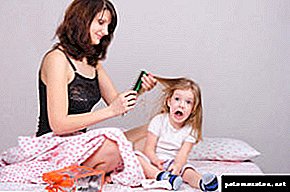 Alopecia caused by a child’s severe psycho-emotional state involves working on trusting relationships with family, sometimes the help of a psychologist is required. In exceptional situations, doctors recommend to wait and take a waiting position, often the hair is restored by itself within six months. However, this is possible if there is no suspicion about depriving, rickets or helminth lesions.
Alopecia caused by a child’s severe psycho-emotional state involves working on trusting relationships with family, sometimes the help of a psychologist is required. In exceptional situations, doctors recommend to wait and take a waiting position, often the hair is restored by itself within six months. However, this is possible if there is no suspicion about depriving, rickets or helminth lesions.
Drugstores
If hair falls out due to avitaminosis, vitamin supplements are prescribed (Pikovit, Vitrum, Alphabet, Supradin, Multitabs), with anemia, iron supplements and appropriate nutrition are prescribed. Special shampoos, ointments and creams (Clotrimazole, Mikoseptin, Mikokonazol, Ketoconazole, Nizoral and Sulfur-Salicylic Ointment) are used against fungi, and antibiotics are used for infectious diseases.
If the main cause of baldness is rickets, the child should take vitamin D. The most common drugs are Aquadetrim, Devisol, Videin. In extremely difficult situations, Carnitine and Potassium Orotate are used for treatment.
Good reviews have injections of medicines based on plant placenta and aloe, as well as steroid ointments. Treatment of trichotillomania in children includes sessions with a psychotherapist and taking sedatives.
ethnoscience
There is a huge number of popular recipes against hair loss. However, before using tinctures and masks, pediatrician approval is required. Effective folk remedies to restore hair:
- The mask of aloe juice, radish and avocado oil. The ingredients are mixed in equal proportions and applied to the scalp of the child while bathing, rinse off after 5 minutes.
 Burr oil. A small amount of funds rub twice a week.
Burr oil. A small amount of funds rub twice a week.- Tincture of nettle. Leaves of grass pour two cups of boiling water, boil for 5 minutes. Broth is used to rinse hair.
- Onion juice. Grind the vegetable in a meat grinder or using a blender, apply juice to the hair roots. After half an hour you can rinse with warm water. White clay is used to eliminate odor.
- Mask of three types of oils. In the same proportions mix burdock, almond and castor oil. Rub a warm mixture into the skin, cover the head with a film and a towel. Wash off in half an hour with a mild shampoo.
Physiotherapy
In addition to medical treatment, physiotherapy is recommended in the fight against baldness. For the treatment of pediatric alopecia, the following methods are used:
- darsonvalization - the procedure is not only safe for children, but also effective, the effect comes due to the acceleration of metabolic processes,
- laser stimulation - suitable for children over 12 years old, performed using a special comb with emitters,
- phonophoresis - the procedure consists in the introduction of fortified preparations into the dermis layer by means of ultrasound, thus the blood circulation is improved, the skin is saturated with oxygen and regenerated faster,
- cryomassage - after the session there is a rush of blood to the skin, the work of the sebaceous glands is normalized, hair growth is stimulated.
Preventive measures
Parents should follow the following rules:
- to control the balance of the child’s diet (meat, pumpkin and its seeds, nuts, carrots, sea fish are always in the menu),
- carefully choose shampoos
- strengthen the immune system
- ensure that the child gets enough sleep and does not overwork,
- do not braid tight hair
- protect your baby from stressful situations and learn how to cope with problems without unnecessary worries,
- organize the day routine correctly
- timely treat diseases.
Is it possible in principle?
Why not? Hair follicles of children function in the same way as in an adult. Hair is constantly in the phase of active growth, respectively, there is a constant process of updating.
For example, in infants hair falls on the head, when the children's down is replaced by normal hair. As a result, some young children have bald patches on their heads. Faced with this phenomenon, parents should not be alarmed, however, sometimes hair loss in children becomes pathological, so it’s best to show the baby to a pediatrician or pediatric trichologist.
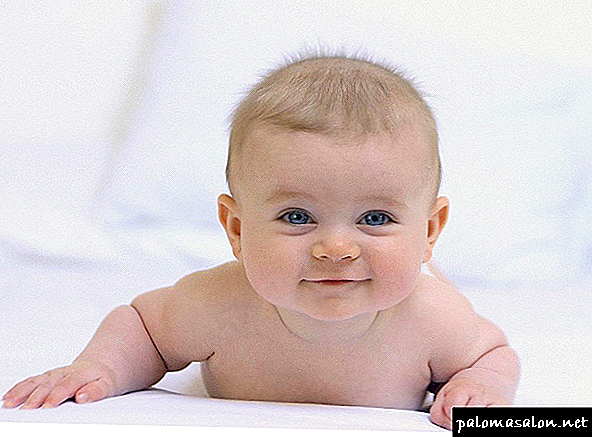
How to fix the situation
If a child has hair fall out, it is necessary to identify and eliminate the cause. After all, excessive hair loss can signal the development of a serious illness Bo. For example, diabetes requires immediate medical intervention.
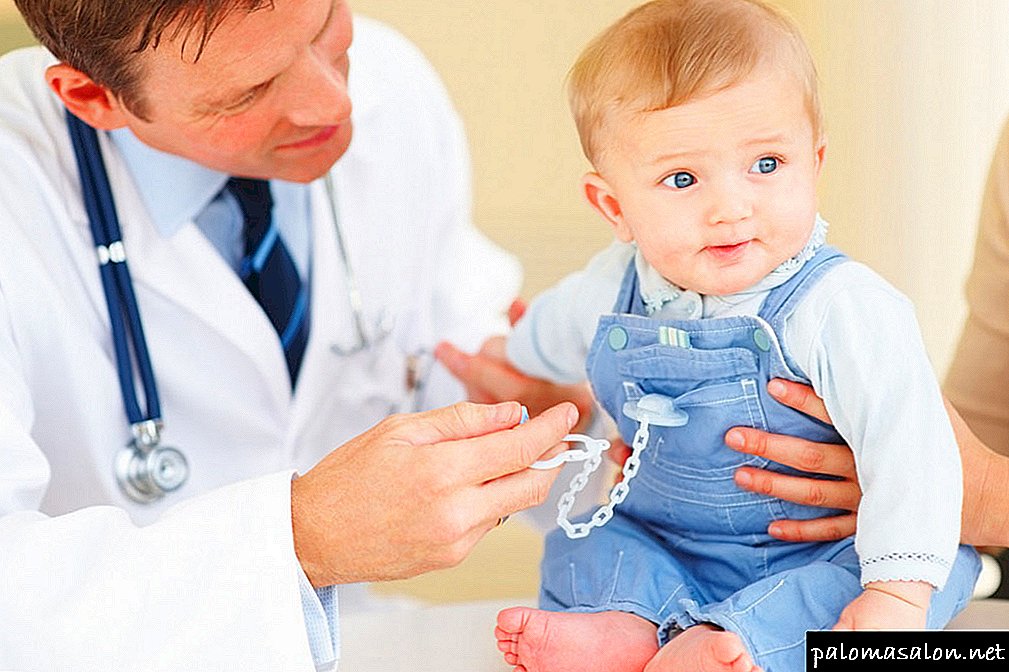
Prevention and treatment of the baby-baby
The following preventive measures can help prevent hair loss problems:
- Strands need proper and delicate care. When choosing a shampoo, carefully study the composition of the product. Hypoallergenic shampoos that do not contain chemical components are suitable for children. Some mothers make babies wash their hair daily. This is fundamentally the wrong approach to hair care. Dermatologists advise you to do this no more than twice a week. In the summer, the frequency of shampooing can be increased. If you do not follow this rule, the skin loses its natural protective layer. Please note that you can not shave small children. Thus, some mothers are trying to solve the problem with liquid strands. The shaving procedure damages the hair follicles, so the situation may become more critical.
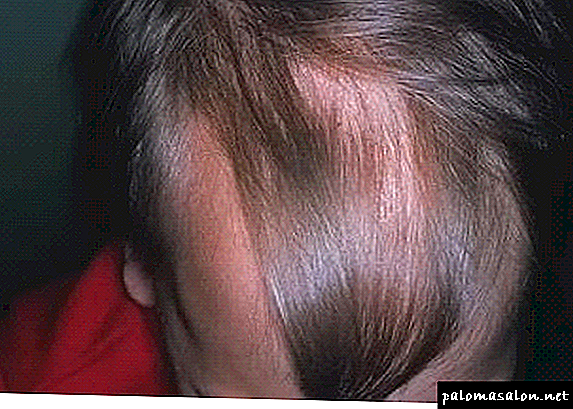
- Balanced diet. Moms know that it’s hard to make a baby eat healthy food. Some parents let things go on their own, and then they wonder why a child's hair is climbing. To preserve a healthy hair structure, your child’s diet should include: dairy products, vegetables, cereals, fish and meat. In the autumn-winter period, you can compensate for the lack of nutrients in the body, taking vitamin complexes.
- Stress. If the child is overworked or there is an unhealthy atmosphere in the family, this can provoke temporary baldness. If you eliminate the cause, the hair will begin to grow in the same volume. Therefore, closely monitor the psycho-emotional state of the baby.

Some parents try to treat childhood alopecia with adult techniques. It is not right. Most of the baldness remedies for external use are not designed for children’s bodies. Even a head massage that strengthens the strand structure should be done by a child specialist.
Tip! If your baby has a habit of winding a strand of hair on his finger, he is at risk. This action injures the hair follicles, which leads to baldness.
To combat child baldness, you can use folk remedies. Trichologists recommend making masks on kefir, almond oil or chamomile broth. Please note that natural ingredients can provoke an allergic reaction, so do not keep the mask on your head for more than 10-20 minutes.
Hair loss in 5 year old children
Gradual hair loss begins in 5 years in children (sometimes it happens in 4 years), which are replaced by new, stronger in the roots. This is a natural process occurring in every child at this age. It is not necessary to sound the alarm, as it is suspended when, practically, all hair is subjected to replacement (the period from 4-5 to 7 years).
Hair loss in children 10 years
It should be noted that alopecia is characteristic from 4-5 to 10 years. The dropout period may be interrupted for a short time. This may be the springtime when the body needs vitamins (vitamin deficiency always begins in spring). Alopecia also happens in the fall, when the child’s body is preparing for winter. New hairs are better able to take fats, vitamins and nutrients to strengthen the roots, which is extremely necessary in the cold season, when the hair becomes brittle.
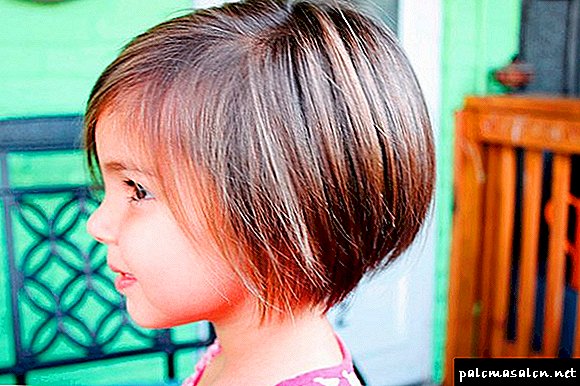
With intensive hair loss in children at the age of 10 It is recommended to carefully inspect the place of baldness. Alopecia with other causes has characteristic traces.
Since natural alopecia in limited quantities begins with 5 years and this process lasts throughout the entire adolescence, hair loss in children at the age of 8 should not cause much panicif it is not associated with any disease.
Prevention of hair loss
Strong immunity of the developing organism plays a crucial role for the baby. This also applies to the quality of the hair. Child nutrition - the main link in the chain of preventive actions. The nutritional status of the child’s immune state depends, and therefore the availability of sufficient amounts of vitamins.
There are many tools that help to avoid difficulties and do not bring alopecia to a neglected state. Popular remedies that act as treatment and prevention are very popular. Ivy decoction is widely used, applied after washing baby's hair. It strengthens the roots, nourishes the hair tissue with essential vitamins, prevents hair from drying out.
It is recommended to use Nizoral 2 times within 10-15 days, during the period of griseofulvin applied inside the drug (prescribed by the doctor for 2 months).
In newborns and children in the first year of life
All small children are somehow the same: they all actively explore the world, and they are all predisposed to develop rickets, especially those who were born in the fall and did not receive enough UV light in the first months of life.
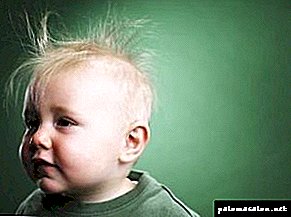
Therefore, an infant has two main reasons why hairs on the back of the head may noticeably thin out:
- constant friction from the fact that the child turns the head,
- hair loss as one of the manifestations of rickets.
 Photo: Genetic Alopecia in Children
Photo: Genetic Alopecia in Children
There are congenital forms of baldness, which are caused by genetic defects. Usually the hair falls out and stops growing on the head - this is total alopecia. On the face and the whole body - universal alopecia. Total alopecia also leads to loss of eyebrows and eyelashes.
In nursery age
Some children are 1-2 years old, less often up to 3 years old, have a habit of constantly stroking their heads or pulling their own hair. This habit of the number of such characteristic habits for the child, like thumb sucking or nipples, the need to pull the blanket. Usually such a habit can be ignored.
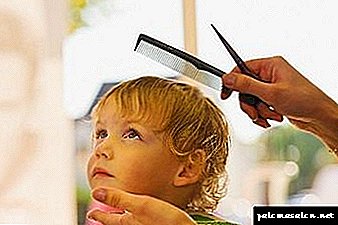
But if repetitive movements lead to increased hair loss, then the hair can be cut shorter so that they are subjected to less mechanical stress. Such behavior may persist in 3-5 years, but then this is a reason to contact a child psychologist to find out the cause and eliminate problem behavior.
In children 3 years and older
At this age, the child begins to actively interact with other children in the children's team, with animals outside the city. Hence, the more frequent occurrence of fungal diseases in children, which can lead to the appearance of rounded centers of baldness. These include:
- microsporia scalp,
- shear lichen.
Diagnose the disease by finding the mycelium of the fungus in the scraping from the surface of the skin of the hearth. Fungal diseases are treated with antifungal shampoos and ointments, in severe cases by taking antifungal drugs orally.
At the same age, the first cases of traction alopecia begin to appear, as the mothers try to brush the child better in the kindergarten, and often too much tension the hair, gathering them into tails, or braiding too tight pigtails.
Alopecia areata in children (nesting) also appears in children 3 years and older.
 Photo: boy's focal alopecia
Photo: boy's focal alopecia
To date, there is not a single study that could explain the causes of the disease.
The following facts speak in favor of this theory:
- centers of hair loss with alopecia areata are formed quickly, usually within 1 day,
- the skin in the lesions is not changed: no flaking, signs of inflammation,
- good effect gives the use of glucocorticosteroids, which have an immunosuppressive effect (suppress the activity of the immune system).
Over time, the centers of hair loss can merge and lead to total alopecia.
Treatment of alopecia areata, it can be prescribed and adjusted depending on the visible effect only the doctor. The result of treatment can be very different: in some people the hair is completely restored, in others the disease can gradually progress despite the therapy being carried out.
Broca's pseudopelade - Another form of focal baldness, which is characterized not only by hair loss, but also by irreversible atrophy of the scalp.
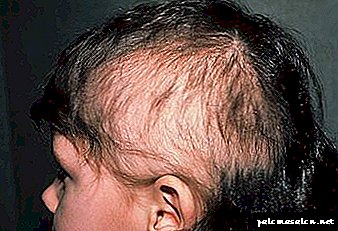 Photo: the form of focal baldness in children
Photo: the form of focal baldness in children
Unlike superficial mycoses, there are no crusts, broken hair and signs of inflammation on the lesions. Unlike alopecia areata, the skin in the foci becomes thinner and smooth and shiny.
Age 6-7 years
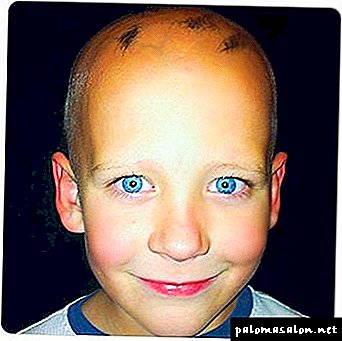 Usually at this age children go to school. The expectations of parents increase, respectively, increases the psychological burden on the children, which may affect their health and well-being. At this age, diseases such as trichotillomania and telogen alopecia occur.
Usually at this age children go to school. The expectations of parents increase, respectively, increases the psychological burden on the children, which may affect their health and well-being. At this age, diseases such as trichotillomania and telogen alopecia occur.
Trichotillomania is a disorder in which the child has the need to pull his hair out.
Independently, the child is not able to control this habit, therefore the help of a psychiatrist is usually required.
Most often baldness with trichotillomania is focal. Hair is broken off at different distances from the skin. Foci of broken hair gradually expanding.
Often this obsessive-compulsive disorder is not limited to just pulling out hair and is accompanied by the habit of eating your hair. Because of these children in the stomach can form lumps of undigested hair.
The disorder responds well to treatment if it is started on time. The hair in the injured areas is restored.
Telogen baldness is the reaction of hair follicles to any problems in the body.
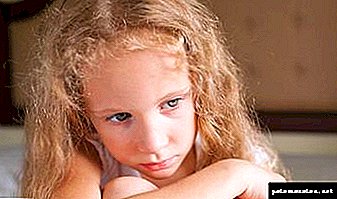
Its causes may be:
- worm infestation,
- any disease, especially if it is accompanied by fever and severe intoxication,
- medication (in children most often these drugs are antibiotics),
- vitamin A overdose
- Iron-deficiency anemia,
- prolonged stress (the need to adapt to school and new requirements for the child),
- poor, monotonous food,
- thyroid disease.
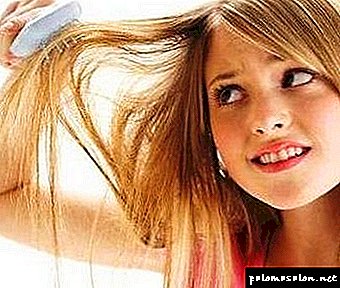 Telogen baldness in itself does not require treatment. It is required to identify and eliminate the cause that caused it. Usually, hair begins to fall out a few weeks or a month after an acute effect on the body.
Telogen baldness in itself does not require treatment. It is required to identify and eliminate the cause that caused it. Usually, hair begins to fall out a few weeks or a month after an acute effect on the body.
Duration can be up to 6 months. Then it takes some time for the hair follicles to regain their normal functioning. About a year after the onset of telogen baldness, hair density is restored.
If the child does not have serious diseases, and all significant causes that could cause hair loss are eliminated, then you can take note of our simple recommendations for proper care and prevention of alopecia in the future.
 Did you know that if a child’s hair does not grow to the age of two, alopecia can last for a lifetime? What are the types of baldness? Read more about this in the article - alopecia areata in children.
Did you know that if a child’s hair does not grow to the age of two, alopecia can last for a lifetime? What are the types of baldness? Read more about this in the article - alopecia areata in children.
The characteristic symptoms of alopecia in children is hair loss in the frontal and occipital regions. Find out what folk remedies are known for children's hair loss at this address.
Cut it well
Each child gradually forms an idea of himself. and in this view hair has a certain meaning. Because even a short haircut after a long period of wearing long hair for a young child is uncomfortable.
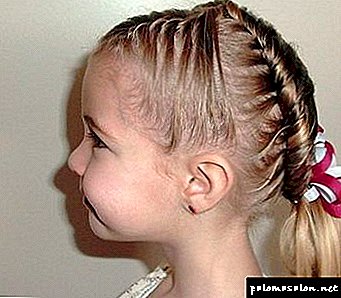
Being shaved bald, the child experiences a double stress: his appearance changes, and he ceases to be like other people from his environment, where everyone walks with his hair. To increase the thickness of this technique does not help, since the amount of hair on the skin of the scalp, their thickness and the average lifetime of each hair are determined genetically and can only be slightly adjusted by nutrition and care.
Use oil masks
In children, the work of the sebaceous glands is still very imperfect, therefore the application of masks from oils is undesirable. The oil can be mixed with water and an emulsifier (can be bought in the component stores for the preparation of home cosmetics).
The effect of such a mask on the skin and hair will be the same as that of oil, but there will be no blockage and disruption of the sebaceous glands.
Properly wash your hair
Often, modern parents tend to bathe their baby every day. This is good from a hygiene point of view, and contributes to rapid sleep in the evening. Usually, after bathing, a moisturizer is used for the skin of the body. And the scalp remains without a protective fatty film. This can lead to significant drying of the scalp and deterioration of the hair.
In order to prevent drying of the skin of the hairy part, you need to pick up baby shampoo and spray for easy combing hair and use it no more than once a week, and on other days wash the hair with decoction of herbs such as chamomile, rosemary, birch leaves, nettle. Children's hair is not salted as quickly as the hair of adults, because washing with herbs will be quite enough for a full cleansing.
Follow the diet of the child
There will be harmful as excessive feeding, and the scarcity of the diet. For healthy hair, it is important to have an adequate supply of protein from food, vitamins and microelements.
Help here will be balanced vitamin-mineral complexes, selected by age and additional intake of fish oil.
Fish oil can be given in capsules, because its unpleasant taste is now not a hindrance to children. Fish oil contains omega-3 polyunsaturated fatty acids in optimal concentrations. These acids are good for the health of the cardiovascular system, improve the condition of the skin, hair and nails.
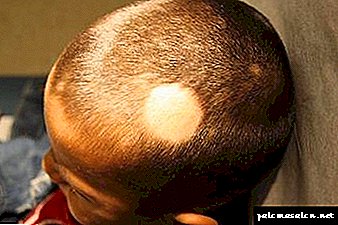 Photo: child's alopecia areata
Photo: child's alopecia areata
Make light moisturizing masks with noticeable dry skin and hair of the child
The simplest, most effective and safe mask for children is:
- 1 teaspoon black radish juice,
- 1 teaspoon of aloe juice (can be freshly squeezed, can be ready to shop, but without alcohol),
- 1 teaspoon avocado oil.
All components are mixed and applied to the scalp of the child already in the bath while bathing. The mask should be spread over the scalp with soft massaging movements and left for 5 minutes. Then the hair is rinsed with regular baby shampoo.
Video: Trichology - secrets of problem hair
Another mask option is:
- 1 teaspoon cedar nuts ground into pulp,
- 1 teaspoon of almond oil (can be replaced with unrefined olive)
- 1 teaspoon milk.
- Gruel needs to be mixed with milk.
- If necessary, you can add a little more milk.
- Mixture insist 2 hours.
- Add butter and mix.
It’s ideal to add the yeast at the tip of a knife to this recipe, but the smell of yeast is usually too unpleasant for the children, and they may refuse to use a mask at all. The mask is applied to the hair in the bath in the same way and left for 20 minutes, then washed off with a mild shampoo.
You should not use mustard or red hot pepper in masks even for breeding.
These components are popular with supporters of folk ways to care for the scalp and hair. But such products in children can cause unbearable itching and irritation on the skin instead of the pleasant warmth familiar to adults.
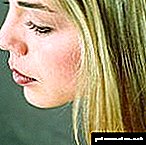 Hair loss after childbirth is a process that can be easily explained from the point of view of the changes that have occurred in the female body. Learn all about hair loss after giving birth.
Hair loss after childbirth is a process that can be easily explained from the point of view of the changes that have occurred in the female body. Learn all about hair loss after giving birth.
Today, masks for strengthening hair with hair loss are very popular. How to make homemade masks, read here.
What are the ways and means of baldness for men? More on this in this article.

 gastrointestinal tract,
gastrointestinal tract, Burr oil. A small amount of funds rub twice a week.
Burr oil. A small amount of funds rub twice a week.